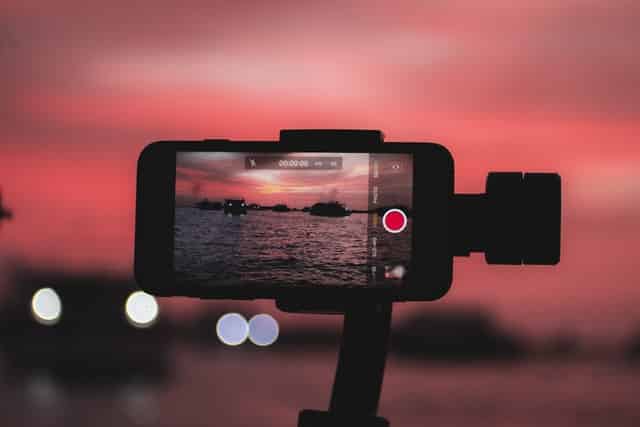How to Make a YouTube Video in 6 Easy Steps (for Beginners)
In today’s age, just about everyone is on some form of social media. And one of the most popular sites for sharing content is Youtube.
With more than 2 billion unique monthly visitors, Youtube is undoubtedly one of the biggest platforms out there.
We all know that Youtube is a great resource for watching videos, and there are a lot of people who are thinking of creating their own videos and share them with the world.
It’s no secret that making your own Youtube videos is a great way to build an audience and promote your brand. But for beginners, the process can seem daunting.
This guide will walk you through the basics of making a professional-grade Youtube video with no prior experience required. So get ready to become the next big thing on YouTube!
1. Planning And Research

Competitor research
Before you start creating your own videos, it’s important to take a look at what’s already out there. Find some of the most popular channels in your niche and see what kind of content they’re putting out.
What topics are they covering? What format are their videos in? How often are they releasing new videos?
By understanding what’s already working for other people, you can get a better idea of what will work for you.
Keyword research
Another important part of the planning stage is keyword research. This will help you determine what people are actually searching for on Youtube, and allow you to create content that meets their needs.
To do this, simply go to the Youtube search bar and start typing in some keywords related to your niche. As you type, you’ll see a list of suggested keywords appear. These are all popular terms that people are searching for.
Make a note of any keywords that are relevant to your brand and what you have to offer. These will be the terms that you’ll want to target with your videos.
Find your niche
Now that you’ve done your research, it’s time to start thinking about what kind of videos you want to create.
First, you’ll need to find your niche. This is the group of people that you’ll be targeting with your content. If you’re not sure who your target audience is, take some time to think about who would be interested in what you have to offer.
Once you’ve identified your target audience, it’s time to start thinking about the type of content they would want to see. What problems can you help them solve? What information can you provide that would be valuable to them?
Answering these questions will help you determine the focus of your channel and the types of videos you should be creating.
Write a script
Now that you know what kind of videos you want to create, it’s time to start writing a script. This will be the foundation of your video and will help you stay on track while filming.
Several factors should be considered when writing your script. First, make sure that your video is focused and has a clear purpose. Every scene should contribute to the overall message of the video.
Second, keep your language simple and easy to understand. Remember, you’re speaking to a wide audience so you’ll want to avoid using jargon or complex concepts.
Finally, try to keep your video short and sweet. People’s attention spans are shorter than ever these days, so it’s important to make sure that your videos are concise and to the point.
Create a storyboard
Once you have your script written, it’s time to start thinking about the visuals. Storyboards are good for this kind of thing.
A storyboard is basically a visual outline of your video. It helps you plan out the shots you want to include and the order that which you want to film them.
Creating a storyboard is a great way to visualize your video and make sure that everything flows together smoothly.
To create a storyboard, simply draw out each scene of your video on a piece of paper or use an online tool like Storyboarder by Wonder Unit and Studiobinder. Once you have your storyboard complete, you’re ready to start filming!
2. Production Equipment

The great thing about YouTube is that you don’t need a ton of fancy equipment to get started. In fact, all you really need is a smartphone and a tripod.
Of course, if you want to take your videos to the next level, there are some additional pieces of equipment you can invest in. Here are a few things you might want to consider:
Camera
If you want to film high-quality videos, you’re going to need a good camera. DSLRs are the best option for video, but they can be expensive. If you’re on a budget, you can find some great mirrorless cameras or even use your smartphone.
Microphone
Audio is just as important as video quality, so you’ll want to make sure that your microphone is up to par. There are a variety of microphones available depending on your needs and budget.
Lighting kit
Good lighting is essential for any video. If you’re filming indoors, you might want to invest in some studio lights. If you’re filming outdoors, try to find a location that’s in the shade.
Green Screen
A green screen is a great way to add some visual interest to your videos. It allows you to superimpose images or footage over your video footage and can really make your videos pop.
Tripod
A tripod is a must-have for any YouTuber. It helps keep your camera steady and ensures that your videos are crisp and clear. There are a variety of tripods available depending on your needs and budget.
Editing Software
Once you’ve filmed your video, it’s time to start editing. This is where you’ll add music, graphics, and other special effects to make your video look its best.
There are a variety of editing software programs available, both for Mac and PC. Some of the most popular options include Adobe Premiere Pro, Final Cut Pro X, and iMovie.
Further Reading: 13 Powerful YouTube Tools You Need to Grow Your YouTube Audience
3. Video Editing Tips

Now that you know the basics of shooting and editing a YouTube video, here are a few extra tips to help you out:
One of the most important aspects of editing is trimming your footage. This simply means cutting out any unnecessary shots or dead space. Doing this will make your video tighter and more engaging.
Add graphics and effects
Adding graphics and special effects is a great way to make your videos more visually appealing. Keep in mind to not go overboard—too many graphics can be distracting and take away from the overall message of your video.
Choose the right music
Music is a great way to set the tone of your video and keep viewers engaged. Just be sure to choose royalty-free music so that you don’t get in trouble with copyright laws.
There are a variety of websites where you can find royalty-free music, such as Bensound and Taketones.
Add subtitles
If you’re catering to an international audience, be sure to add subtitles to your videos. This will help viewers who don’t speak your language understand what’s going on in your video. You can add subtitles using most editing software programs. Simply create a text file with your transcript and upload it to your software.
Add Transitions and annotations
Transitions and annotations are a great way to keep your viewers engaged. Transitions help to break up your video and make it more visually interesting, while annotations allow you to add links, call-outs, and other notes.
Create a video thumbnail
Your video thumbnail is the first thing that viewers will see when they come across your video, so it’s important to make a good impression. Choose an image that accurately represents your video and is visually appealing. You can create a custom thumbnail using most editing software programs.
Further Reading: The Best 14 Thumbnail Makers for YouTube
Your Intro and Outro
Your intro and outro are the first and last things that viewers will see, so you want to make sure that they’re memorable. Your intro should be short and to the point. Make sure to grab the attention of your viewers and let them know what they can expect from your video. Your outro should be just as attention-grabbing as your intro. You might want to include a call-to-action, such as asking viewers to subscribe to your channel.
4. Uploading Your Video
Now that your video is complete, it’s time to upload it to YouTube.
Here’s how:
- If you do not already have a YouTube account, create one first.
- Once you’re logged in, click on the Upload button in the top right corner of the screen. This will open up a new window where you can select your video file.
- Once your file has been selected, you’ll be given the option to add a title, description, and tags for your video. Be sure to fill out this information so that viewers can easily find your video.
You also have the option to choose whether or not your video is set to private or public. If you’re just starting out, you might want to set your videos to public so that anyone can view them.
However, if you’d prefer to keep your videos private, you can set them to unlisted. This means that only people with the link to your video will be able to view it.
And that’s it! You’ve now successfully created and uploaded your first YouTube video.
Further Reading: The Top 11 Must-Know YouTube Tricks for Marketers
5. Optimizing Your Videos for SEO

Optimizing your videos is crucial if you want viewers to find them easily. Here are a few tips:
Choose a catchy title
Your title should be reflective of the content of your video and interesting enough to make viewers want to watch it. Titles such as “How to Make a YouTube Video” are more likely to be clicked on than something mundane like “My First Video.”
Use keywords
In both your title and description, be sure to use relevant keywords that describe your video. These keywords will help viewers find your video when they search for related terms on YouTube. You can also add tags to your videos, which are essentially just additional keywords that describe your content.
Create transcripts
Creating transcripts of your videos is a great way to improve their SEO. Transcripts provide YouTube with more information about the content of your videos, which can help them to rank higher in search results. You can create transcripts using most editing software programs. Simply create a text file with your transcript and upload it to your software.
Add captions
Adding captions to your videos is another great way to improve their SEO. Captions provide YouTube with more information about the content of your videos, which can help them to rank higher in search results. You can add captions using most editing software programs. Simply create a text file with your transcript and upload it to your software.
Further Reading: Video Marketing SEO: 11 Ways to Optimize Your Video for Search

Once you’ve created and uploaded your videos, it’s important to promote them so that they can be seen by as many people as possible. Here are a few ideas:
Share your videos on social media
One of the best ways to promote your videos is to share them on social media. You can post them on your own profile or page, or you can share them in relevant groups and forums. This will help to get your videos in front of a large audience.
Embed your videos on your website or blog
If you have a website or blog, you can embed your videos on it so that viewers can watch them directly on your site. This is an excellent way to keep viewers interested in your content.
Collaborate with other channels
If you collaborate with other channels, you can cross-promote your videos and reach a larger audience. This can be done by featuring each other’s videos in your own content, or by guest-starring on each other’s channels.
Further Reading: 15 Useful Tips on How to Get More Views on YouTube Videos
The Takeaway
YouTube is a great platform for sharing your videos with the world. If you want to be successful on YouTube, it’s important to create high-quality content and promote your videos.
By following these tips, you can quickly build up a large audience for your YouTube channel.
Hero photo by Sebastian Pandelache on Unsplash
Author Bio
Maria Imelda Alvarez is a content writer and PR outreach specialist at VEED.IO.

